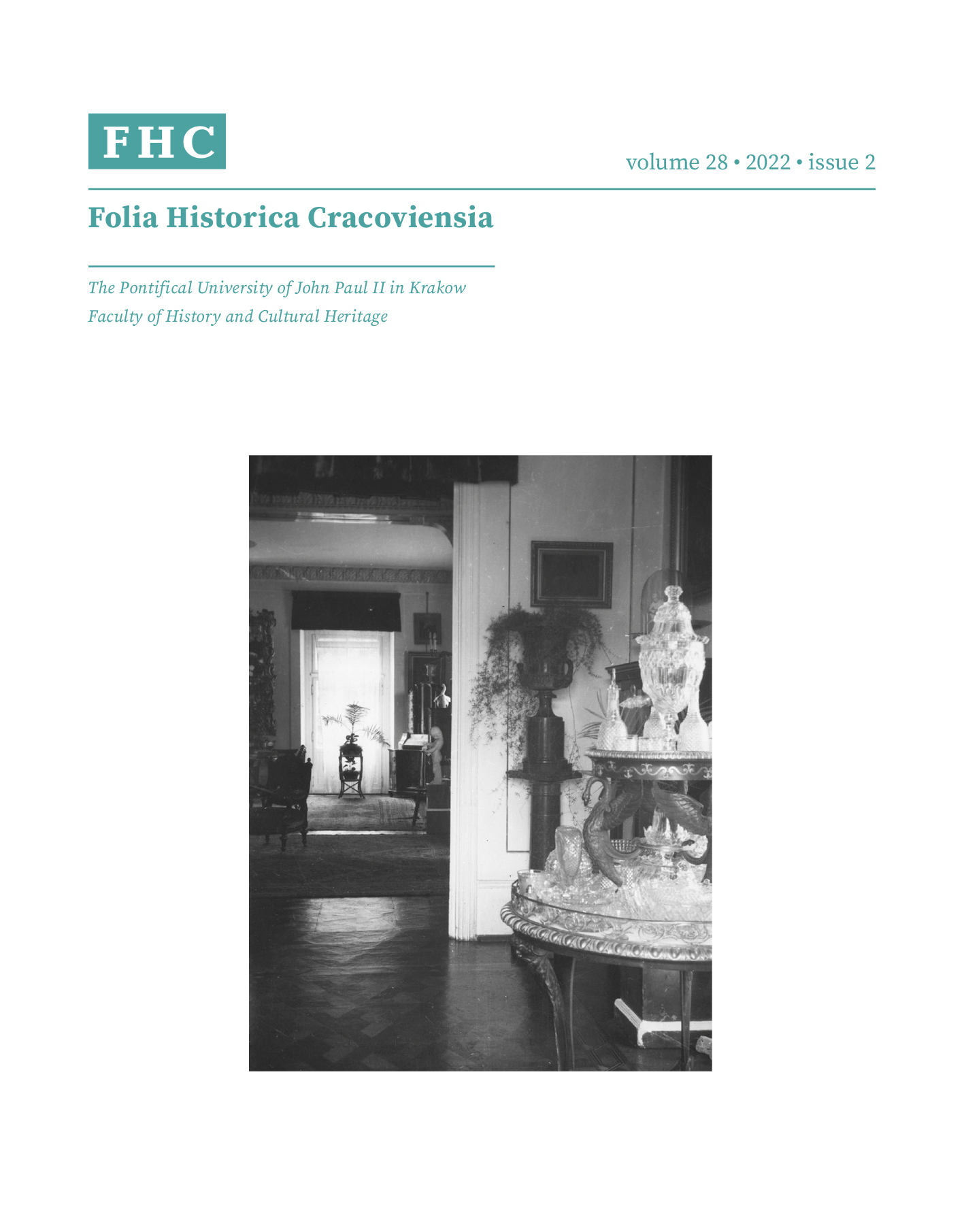The dispersing of the Lubomirski Collection from Przeworsk
The dispersing of the Lubomirski Collection from Przeworsk
Author(s): Agata WolskaSubject(s): Museology & Heritage Studies, History of Art
Published by: Wydawnictwo Naukowe Uniwersytetu Papieskiego Jana Pawła II w Krakowie
Keywords: the Lubomirski family; Przeworsk; collection; museum storehouse; nationalisation; land reform;
Summary/Abstract: This article concerns the post-war fate of elements of historical furnishings of the Lubomirski family palace in Przeworsk owned by successive Tenants-in-Possession, who were also literary curators of the Ossolineum. The ownership structure of the collections stored in the palace and outbuildings was uneven. Some items belonged to the Przeworsk Entailed Estate, and some were personal property of Andrzej Lubomirski. A significant share belonged to his wife, Eleonora née Hussarzewska and originated from her family’s collection, and from a donation her husband made in 1932. The outbreak of the Second World War initiated the process of dispersing items that had survived in the Przeworsk residence of the Lubomirski family until the autumn of 1939. After the looting perpetrated by the Nazis, land reform proved equally painful in its consequences. As a result, the so-called Museum Storehouse was set up in the Lubomirski residence in Przeworsk to house its nationalised equipment. It was a temporary repository for the remaining elements of the Tenants-in-Possession and family collection in Przeworsk. The decision by the communist central authorities led to the dispersion of the most valuable items, distributed among museums in Warsaw (antiquities), Łańcut (paintings, graphics, furniture and artistic craftsmanship) and Rzeszów (jewellery for the Polish costume). The pieces considered useful were left in place. This text, along with its accompanying tables, represents an attempt to wrap up the existing knowledge regarding the post-war fate of the items that remained in the Przeworsk Palace until 1944 and can serve as a starting point for further detailed investigations. This text could also serve as a starting point for deeper reflection on the political and administrative mechanisms of dispersal of the land owners’ and aristocrats’ collections and the establishment of new museum collections after the Second World War.
Journal: Folia Historica Cracoviensia
- Issue Year: 28/2022
- Issue No: 2
- Page Range: 5-163
- Page Count: 159
- Language: English

